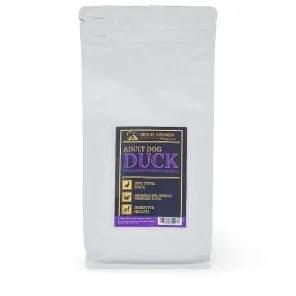Its name says it all: the Vienna blue rabbit comes from Austria. Not only is it beautiful with its shiny blue-grey...
THE CARDIGAN WELSH CORGI
INTRODUCTION
The Cardigan Welsh Corgi is a small, robust dog that has been bred for centuries in the misty hills of Cardiganshire in Wales, its name meaning ‘dwarf dog’ in Welsh. In fact, it has been discovered in ancient Welsh law that there could be severe penalties for those who stole or harmed a Cardigan Welsh Corgi, because its work had a direct effect on the economic status of its owners.
THE ORIGINS OF THE CARDIGAN WELSH CORGI
The Cardigan Welsh Corgi is less numerous and always has a tail unlike its counterpart, the Pembroke Welsh Corgi. The cardigan corgi is a separate breed from the old lineage, descended from the Teckel or Dachshund family. The early corgi cardigans were heavy, golden or blue merle and perhaps with floppy ears. Careful blends were made with the ideal qualities for herding work in mind. However, some consider the result to be more refined, fox-like and suitable for a queen.
The original task of the Cardigan Welsh Corgi was to go ahead of his master's herd of cattle and clear the way by chasing off potential predators and alerting to foreign herds entering the grazing area. Later, the corgi cardigan began to act as a herder, working behind his master's cattle and as a ‘driver’, taking cattle from Welsh farms to English markets. At this time, the original cardigan corgi may have been crossed with local sheepdogs to make a more versatile working dog.
The faithful Welsh Cardigan Corgi was used in its heyday, acting as a sheepdog, a watchdog for thieves, as well as a rodent exterminator. During the Viking invasion 1,000 years ago, and the subsequent arrival of Flemish weavers, a Spitz-type dog was introduced into parts of Wales. These Spitz were mixed with the original corgi to produce what is now known as the Pembroke Welsh corgi. However, corgis residing in areas unaffected by such influences retained their original basic blood and were the descendants of the Cardigan Welsh Corgi.
WHAT IS THE CARDIGAN WELSH CORGI LIKE?
GENERAL APPEARANCE: Robust, sturdy, hardy, restless, capable of endurance. Long in proportion to height, ending in a fox tail in appearance, set in the line of the body.
IMPORTANT PROPORTIONS: Length of muzzle in proportion to head 3 to 5.
HEAD: In appearance and shape of a fox's head.
CRANIAL REGION:
SKULL: Broad and flat between the ears; tapering towards the eyes above which is slightly domed.
STOP: Moderate.
FACIAL REGION:
TRUFFLE: Black, projecting slightly, in no sense sharp.
HOCIO: Moderately tapering towards the nose.
Jaws/Teeth : Strong teeth with scissor bite, i.e. the upper incisors closely overlapping the lower incisors and set vertically in the jaws. The lower jaw is clean cut. Strong but without prominence.
EYES: Medium size, clean, giving a gentle, alert but watchful expression. Set rather wide apart with clearly defined angles. Preferably dark, or in accordance with coat colour, rims of eyelids dark. One or both eyes pale blue, blue or mottled blue are permitted only in blue merles.
EARS: Erect, in proportion rather large for the size of the dog. The tips slightly rounded, moderately broad at the base and set approximately 8 cm (3.5 inches) apart. Carried in such a way that the points are slightly outward in a straight line drawn from the tip of the nose, through the centre of the eyes, and set well back so that they lie flat along the neck.
NECK: Muscular, well developed in proportion to the build of the dog, set into well sloping shoulder blades.
BODY : Rather long and strong.
UPPER LINE: Level.
LOIN: Waist clearly defined.
CHEST: Moderately broad with prominent sternum. Chest deep. Ribs well sprung.
TAIL: Like a fox tail, set on in line with the body and moderately long (to touch the ground or close to the ground). Carried low in repose but can be raised a little over body in movement, not curved over back.
LIMBS: Strongly boned. Short limbs but body must be clearly off the ground.
FOREQUARTERS:
Shoulders (shoulder blades): Lean well back, angulated at approximately 90° to the humerus, muscular.
ELBOWS: Close to the sides.
FOREARMS: Slightly arched, moulding to the rounded chest.
HANDS: Round, close fitting, rather large and with good pads. Turned slightly outwards.
HINDQUARTERS: Strong, well angulated and well aligned with muscular thigh and tibia; strong bone to the ground. Short limbs.
METATARS: Vertical when the dog is at rest, seen from side and rear.
FEET: Round, tight, rather large, with good pads.
GAIT / MOVEMENT: Free and active, elbows fitting close to the sides of the body, neither loose nor tight. Forelegs reaching well forward without too much lift, in unison with the pushing action of the hindquarters.
COAT
HAIR: Short to medium, harsh in texture. Weather resistant, with good undercoat. Preferably straight.
COLOUR: Accepted colours are: blue myrtle, brindle, red, sable, tricolour with brindle markings and tricolour with red markings. All the above with or without typical white markings on head, neck, chest, underparts, legs and feet, white tip of tail. White should not predominate on the body or head where it should never surround the eyes. Nose and eyelids should be black. Liver and dilute colours are highly undesirable.
SIZE AND WEIGHT:
SIZE AT CRUZ: 30 cm.
WEIGHT: In proportion to size, taking into account primarily the overall balance. Females usually weigh between 11 and 15 kg and males between 14 and 17 kg.
FAULTS: Any departure from the foregoing points should be considered a fault and the seriousness with which the fault should be regarded should be in exact proportion to its degree and its effect upon the health and welfare of the dog and its ability to perform its traditional work.
DISQUALIFYING FAULTS:
- Aggressiveness or extreme shyness.
- Any dog showing clear physical or behavioural abnormalities.
N.B.:
- Male dogs should have two apparently normal appearing testicles fully descended into the scrotum.
- Only functionally and clinically healthy dogs of typical breed conformation should be used for breeding.
HEALTH OF THE WELSH CORGI CARDIGAN
The Welsh Corgi Cardigan is a dog that can live for 15 years, but this breed can suffer from some hereditary diseases that are easily diagnosed and prevented through timely health testing, which should be done prior to breeding.
- Hip dysplasia: One of the most common health problems faced by Corgis is hip dysplasia, which affects the development of the hip joint and causes loss of joint function over time. This condition usually takes a little while to develop, but it has been observed that dogs as young as four months may begin to experience symptoms such as a decreased range of motion, difficulty standing or jumping, a sway gait, pain or stiffness.
Obesity and lack of exercise (or even too much exercise) can exacerbate hip dysplasia, so if you notice your corgi experiencing any of these symptoms, make an appointment with your vet to ensure your pet is following the right diet and getting the right amount of exercise.
Depending on the severity of the dysplasia, there may be other treatment options, including physiotherapy, anti-inflammatory medication or surgery.
- PROGRESSIVE RETINA ATROPHY (PRA): PRA is a degenerative condition that affects the photoreceptors in canine eyes, degrading vision over time and eventually leading to blindness. It is not painful, but it can affect a dog's quality of life. It is not only one of the most common corgi diseases but for all dogs. Some of the early symptoms of PRA include night blindness (which can manifest as fear of going out in the dark or bumping into things in dark rooms), eyes that appear highly reflective when illuminated by light, or pupils that appear more dilated than normal.
There is currently no known treatment for PRA, but if you notice your dog exhibiting symptoms of decreased vision, it's time for a visit to your vet. They can diagnose the disease and tell you how you can help keep your pet safe.
- DEGENERATIVE MYELOPATHY: Because corgis have an elongated spine, this also means they are more likely to develop a serious nerve and spinal disease called degenerative myelopathy. This condition affects the dog's central nervous system, spinal cord and brainstem.
Common symptoms include muscle atrophy and posture problems, partial or total paralysis of the limbs and decreased muscle mass. There is currently no known cause for degenerative myelopathy, but scientists are investigating genes that may increase a dog's likelihood of developing it.
Common symptoms include muscle atrophy and posture problems, partial or total paralysis of the limbs and decreased muscle mass. There is currently no known cause for degenerative myelopathy, but scientists are investigating genes that may increase a dog's likelihood of developing it.
- VON WILLEBRAND'S DISEASE: Common health problems in corgi include von Willebrand's disease, an inherited disorder that decreases blood clotting. This can cause excessive bleeding after injury and can lead to dangerous blood loss and anaemia.
Common symptoms of von Willebrand's disease include spontaneous bleeding from mucosal surfaces such as the nose, genitals or gums; blood in the urine or stool; bruising and prolonged bleeding after an injury or surgical procedure.
While this can be quite frightening for the human corgi family, the prognosis for dogs with von Willebrand's disease is usually good. If the dog has mild or moderate von Willebrand's disease, it will need minimal treatment (although it should be monitored for more severe symptoms). A veterinarian will usually treat a more severely affected dog with blood transfusions.
- OBESITY: The Corgi is prone to obesity and considering the length of its legs and back this is more dangerous than usual, so we have to opt for a healthy, low fat diet, e.g. Reis d'Aranda's pork or duck adult dog food.
THE CARDIGAN WELSH CORGI AS A COMPANION ANIMAL
The Cardigan Welsh Corgi is an energetic little dog that needs a family that loves to be outdoors. This dog retains the herding instinct of his ancestors and therefore loves to be constantly on the move. They tend to bite ankles and chase people's feet. They are obedient and loyal to the family. Very attentive to what is going on around him, he is a good watchdog for the home.
CONCLUSION
The Cardigan Welsh Corgi originates from Wales in Great Britain. It is often referred to simply as ‘Cardigan’ so as not to be confused with the Pembroke Welsh Corgi. The Cardigan Welsh Corgi is a recognised breed of dog (Group 1, Section 1, FCI Standard No. 38). This sheepdog develops a strong bond with its owner. The earlier it comes into contact with children, the less difficult it will be. If he acquires good experience with children, he will become an excellent family dog.
Leave a comment
Log in to post comments
















